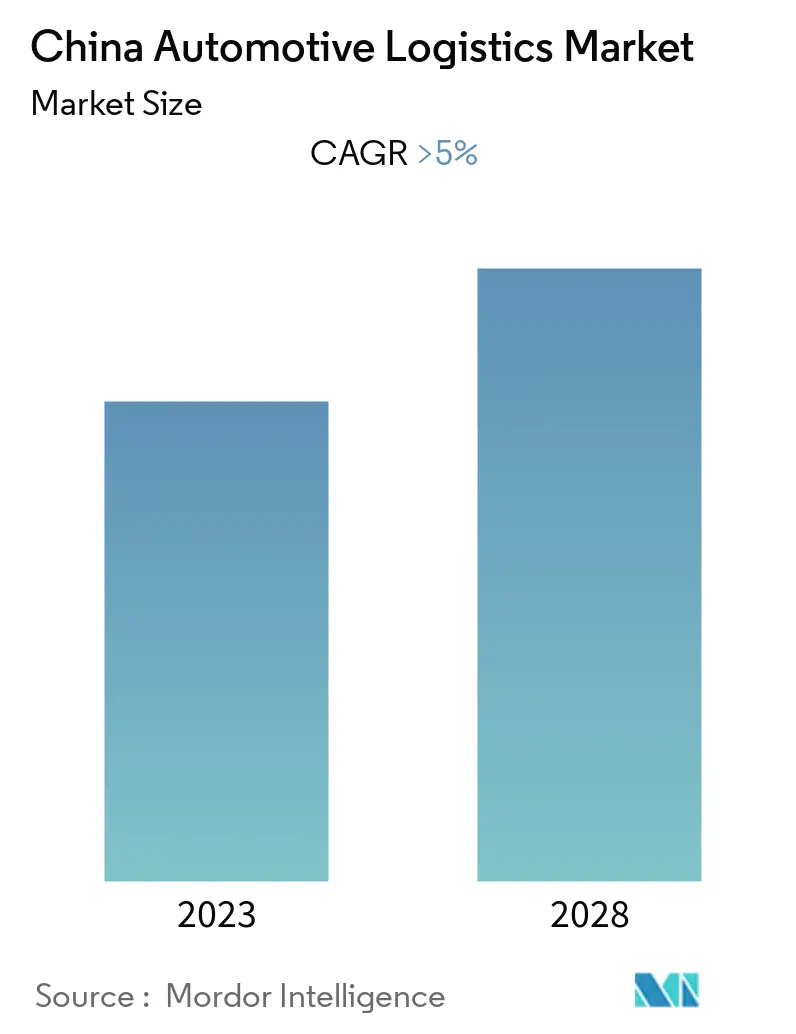Market Size of China Automotive Logistics Industry

| Study Period | 2019 - 2028 |
| Base Year For Estimation | 2021 |
| Forecast Data Period | 2024 - 2028 |
| Historical Data Period | 2019 - 2020 |
| CAGR | > 5.00 % |
| Market Concentration | Low |
Major Players.webp)
*Disclaimer: Major Players sorted in no particular order |
Need a report that reflects how COVID-19 has impacted this market and its growth?
China Automotive Logistics Market Analysis
The market for the China automotive logistics market is estimated to grow at a CAGR rate of 5% during the forecast period.
The COVID-19 pandemic has brought significant changes in the automotive industry in China. Preliminary data from the China Passenger Car Association (CPCA) finds that passenger car sales dipped 80% since february 2020. Production is resuming but at a slower rate due to logistical problems.
In the wake of the COVID-19 pandemic, the Chinese government has taken steps to bounce back the automobile consumption. These steps include postponing the implementation of the China Six Emission Standard to January 2021, providing fiscal and taxation support, speeding up the elimination of obsolete diesel trucks, and optimizing secondhand vehicle trading channels.
China continues to be the world’s largest vehicle market by both annual sales and manufacturing output, with domestic production expected to reach 35 million vehicles by 2025. Based on data from the Ministry of Industry and Information Technology, over 25 million vehicles were sold in 2020, including 19.99 million passenger vehicles, down 6.5% from 2019. Commercial vehicle sales reached 5.23 million units, an increase of 20% from 2019. Overall car sales in China had reached about 26.1 million vehicles in 2021.
China's exports are less because of its trade policy. Foreign carmakers are required to form joint ventures with Chinese car manufacturers in order to build cars in China. This policy aims to build the domestic car-making industry and strengthening the in-house automotive logistics sector. China is also looking at being the world’s number one producer, exporter, and user of New Energy Vehicles (NEVs).
